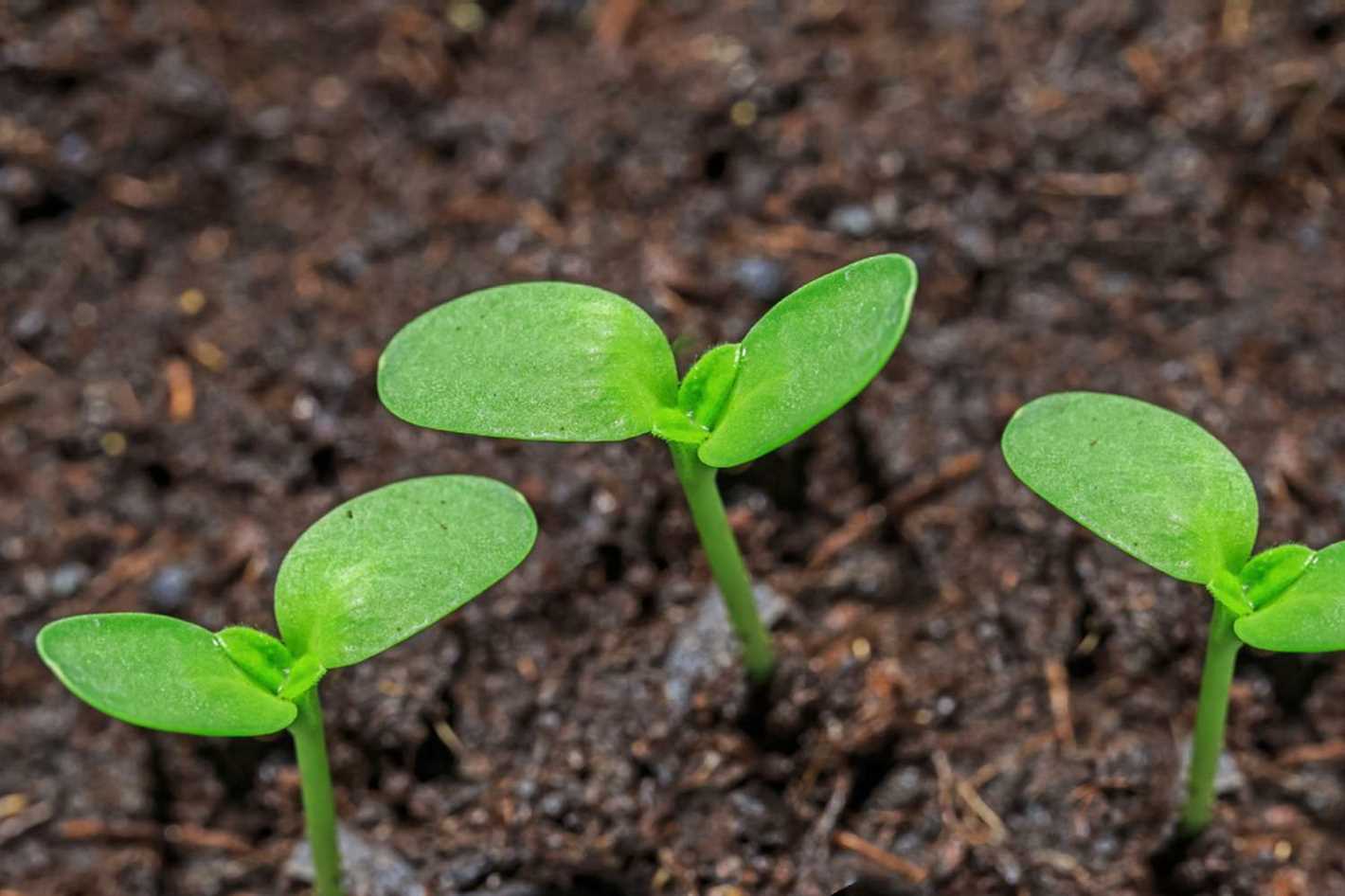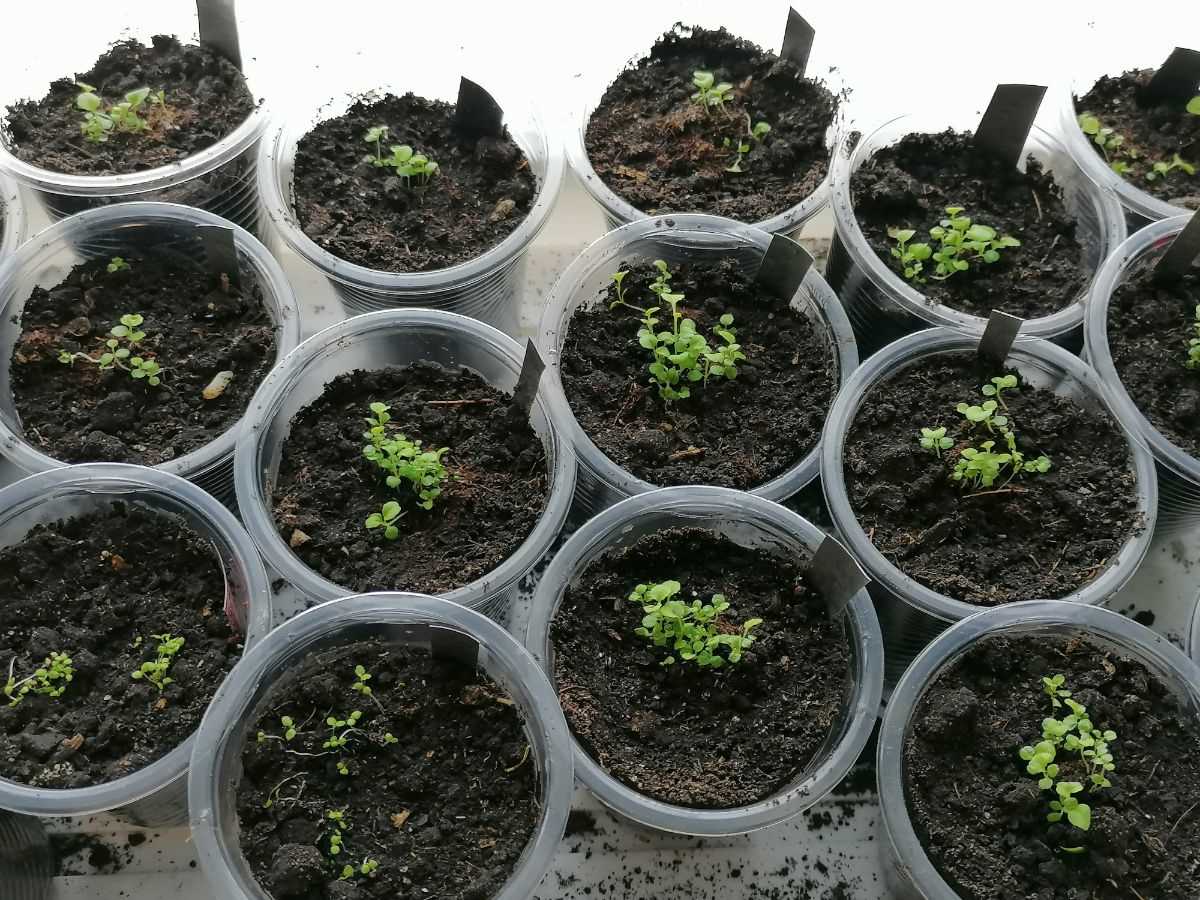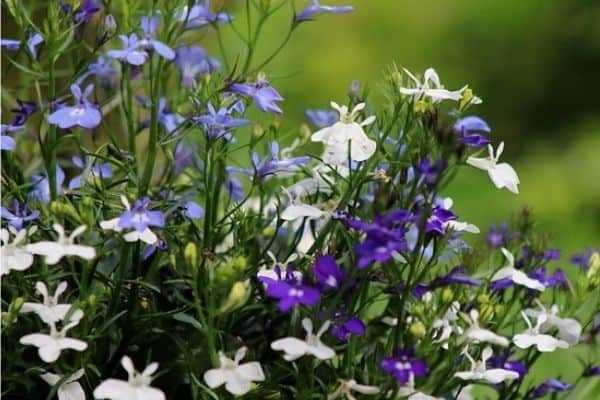- Importance of Sowing Lobelia Seeds
- Choosing the Right Time and Place
- 1. Time of Year
- 2. Climate
- 3. Light Conditions
- 4. Soil Quality
- 5. Watering Needs
- 6. Pests and Diseases
- Preparing the Soil for Sowing
- Sowing Lobelia Seeds
- Caring for Seedlings
- 1. Provide Adequate Lighting
- 2. Maintain Moderate Temperature
- 3. Water Regularly
- 4. Fertilize as Needed
- 5. Thin Out the Seedlings
- 6. Provide Support
- 7. Transplanting
- Watering and Feeding Seedlings
- Watering
- Feeding
- Picking Lobelia Seedlings
- Transplanting and Further Care
- Questions and Answers:
- What is the best time to sow Lobelia seeds?
- Do Lobelia seeds need darkness to germinate?
- How often should I water Lobelia seedlings?
- When should I transplant Lobelia seedlings?
- Can Lobelia seedlings be grown indoors?
- Videos: Easy way to Sow Lobelia Seeds
Lobelia is a popular and beautiful annual flower that comes in a variety of vibrant colors. It is easy to grow from seed and adds a touch of color to any garden or container. In this step-by-step guide, we will walk you through the process of sowing lobelia seeds, picking seedlings, and caring for the seedlings to ensure a successful and blooming garden.
Step 1: Sowing Lobelia Seeds
Start by preparing a seed tray or small pots with a seed starting mix. Make sure the soil is moist but not waterlogged. Sprinkle the lobelia seeds evenly over the soil surface and lightly press them into the soil. Be careful not to bury them too deep. Lobelia seeds are very small and require light to germinate.
Pro Tip: To make sowing easier, you can mix the seeds with a small amount of sand to help distribute them evenly.
Step 2: Picking Seedlings
Once the seedlings have reached a height of about 1 inch and have developed their first set of true leaves, they are ready to be picked. Gently separate the seedlings by carefully lifting them from the tray or pots. Be sure to handle them by their leaves, rather than the delicate stem, to avoid damaging the plant.
Pro Tip: If the seedlings are growing too closely together, you can use a pair of small scissors to snip away the excess seedlings, leaving only the strongest ones.
Step 3: Caring for Seedlings
After picking the seedlings, transplant them into small individual pots or containers filled with a well-draining potting mix. Place the pots in a location that receives bright, indirect light and maintain a temperature of around 60-70°F (15-21°C). Water the seedlings gently and regularly, making sure not to overwater them. Keep the soil moist but not waterlogged.
Important Note: Lobelia seedlings are delicate and require some care. If the seedlings become leggy or start to wilt, they may need more light or water. On the other hand, if they develop yellowing leaves, it may be a sign of overwatering. Adjust the care accordingly to ensure the health and vigor of your lobelia seedlings.
With the proper care and attention, your lobelia seedlings will grow into beautiful, blooming plants that will bring color and beauty to your garden or containers. Enjoy the process of sowing lobelia seeds and watching them grow, and soon you will be rewarded with a stunning display of flowers.
Importance of Sowing Lobelia Seeds
Lobelia is a beautiful flowering plant that is highly valued for its vibrant colors and delicate blooms. Sowing Lobelia seeds is an essential step in growing this plant, as it allows you to control the growing conditions and ensure the best possible outcome.
1. Variety Selection:
By sowing Lobelia seeds, you have the opportunity to choose from a wide variety of options, including different colors and growth habits. This allows you to create a stunning display in your garden or containers, with plants that perfectly complement each other.
2. Cost-effective:
Sowing Lobelia seeds is a cost-effective way to grow this plant compared to buying established plants from a nursery. Seeds are generally more affordable, and by growing from seeds, you can produce a large number of plants at a fraction of the cost.
3. Customization:
When you sow Lobelia seeds, you have the freedom to customize the growing conditions as per your requirements. You can choose the appropriate soil mix, control the watering schedule, and provide the optimal amount of sunlight to ensure healthy growth.
4. Learning Experience:
Sowing Lobelia seeds provides a valuable learning experience, especially for beginners. It allows you to understand the plant’s life cycle, from seed germination to seedling formation and eventually to mature plants. This hands-on approach helps in developing essential gardening skills and increases your knowledge about plants.
5. Timing and Succession Planting:
By sowing Lobelia seeds, you have better control over the timing of planting. You can start seeds indoors early in the season to get a head start on the growing process. Additionally, you can also practice succession planting, which involves sowing seeds at different times to ensure a continuous supply of blooming plants throughout the season.
In conclusion, sowing Lobelia seeds is an important step in growing this beautiful plant. It offers various advantages such as variety selection, cost-effectiveness, customization, learning experience, timing control, and succession planting. By taking the time to sow Lobelia seeds, you can enjoy a stunning display of colorful blooms and experience the joy of growing your own plants.
Choosing the Right Time and Place
When it comes to sowing lobelia seeds, choosing the right time and place is crucial for the successful growth of your seedlings. Here are some factors to consider:
1. Time of Year
The ideal time to sow lobelia seeds is in early spring. This will give your seedlings a chance to establish before the summer heat sets in. Lobelia plants thrive in cool weather, so avoid sowing the seeds in the hot summer months.
2. Climate
Lobelia plants prefer temperate climates and grow best in areas with moderate temperatures. They can tolerate some heat, but they may struggle in extremely hot and humid conditions. If you live in a region with a hot climate, consider sowing the seeds in a shaded area or providing some form of protection from the intense sun.
3. Light Conditions

While lobelia seeds need light to germinate, they also require some darkness to encourage strong and healthy growth. Choose a location that receives partial sunlight or dappled shade. Avoid placing the seed trays in direct sunlight, as this can cause the soil to dry out too quickly and negatively affect germination.
4. Soil Quality
Lobelia plants prefer well-draining soil that is rich in organic matter. Before sowing the seeds, prepare the soil by removing any weeds and breaking up clumps. Mix in some compost or well-rotted manure to improve the soil fertility and drainage.
5. Watering Needs
Lobelia seedlings require consistent moisture to thrive. Choose a location that is easily accessible for regular watering. Avoid areas that are prone to waterlogging, as this can cause root rot and other problems.
6. Pests and Diseases
Consider the pest and disease pressure in your area when selecting a location for sowing lobelia seeds. Slugs and snails are common pests that can damage lobelia plants, so try to choose a spot away from their favorite hiding places, such as dense vegetation or damp areas.
By carefully considering these factors and choosing the right time and place, you can create optimal conditions for sowing lobelia seeds and ensure the successful growth of your seedlings.
Preparing the Soil for Sowing
Before you sow lobelia seeds, it is important to prepare the soil properly. This will ensure that the seeds have the best chance of germinating and growing into healthy seedlings. Here are a few steps to help you prepare the soil for sowing:
- Choose the right location: Lobelia thrives in well-drained soil and full sun to partial shade. Select a location that receives at least 6 hours of sunlight a day.
- Clear the area: Remove any weeds, rocks, or debris from the area where you plan to sow the seeds. Lobelia seeds are small and can easily be overwhelmed by competing plants or obstacles.
- Loosen the soil: Use a garden fork or a tiller to loosen the soil to a depth of about 6 inches. This will help improve drainage and allow the roots of the lobelia seedlings to penetrate the soil more easily.
- Amend the soil: Lobelia prefers slightly acidic soil with a pH level between 5.5 and 6.5. If your soil is not in this range, you may need to amend it with organic matter or garden lime. Follow the instructions on the product packaging for the best results.
- Add compost: Mix in a generous amount of compost or well-rotted manure to improve the fertility and moisture-holding capacity of the soil. This will provide the lobelia seedlings with the nutrients they need to grow strong and healthy.
- Level the soil: Use a rake to level the soil, removing any large clumps or stones. This will create a smooth surface for sowing the lobelia seeds.
By following these steps, you can ensure that the soil is prepared and ready for sowing lobelia seeds. A well-prepared soil will provide an ideal environment for the seeds to germinate and the seedlings to thrive.
Sowing Lobelia Seeds
Sowing lobelia seeds is a simple process that can be done indoors or outdoors, depending on your climate and the time of year. Follow these steps to successfully sow lobelia seeds:
- Choose the right time: Lobelia seeds can be sown indoors or outdoors, but it’s best to start them indoors about 8-10 weeks before the last frost date in your area. This will give the seedlings enough time to grow and become established before the planting season.
- Prepare the soil: Lobelia plants prefer rich, well-draining soil. Before sowing the seeds, prepare the soil by loosening it with a garden fork or tiller. Remove any weeds or debris and mix in some compost or well-rotted manure to improve the soil’s fertility.
- Sow the seeds: Scatter the lobelia seeds over the prepared soil, ensuring they are spread out evenly. Lightly press the seeds into the soil, but do not cover them with soil as they need light to germinate. Sprinkle water over the seeds to moisten the soil.
- Provide proper lighting: Lobelia seeds require light to germinate, so place the seed trays or pots in a bright location, such as a south-facing window or under grow lights. Avoid placing them in direct sunlight, as this can cause overheating.
- Keep the soil moist: Lobelia seeds need consistent moisture to germinate and grow. Check the soil regularly and water whenever it feels dry to the touch. Water gently to avoid displacing the seeds or causing waterlogging.
- Thin out the seedlings: Once the seedlings have emerged and have developed their first true leaves, it’s time to thin them out. Choose the strongest seedlings and carefully remove the excess ones, leaving a spacing of about 4-6 inches between each plant.
- Transplant the seedlings: When the danger of frost has passed and the seedlings have grown to a healthy size, transplant them into their final growing location. Choose a spot with partial shade and well-draining soil.
- Maintain proper care: After transplanting, continue to provide the lobelia plants with regular water and occasional fertilizer. Keep an eye out for any pests or diseases and take appropriate measures to protect your plants.
By following these steps, you can successfully sow lobelia seeds and enjoy beautiful, vibrant flowers in your garden or containers.
Caring for Seedlings
Once your lobelia seedlings have germinated and started to grow, it’s important to provide them with proper care to ensure their health and development. Here are some tips to help you care for your lobelia seedlings:
1. Provide Adequate Lighting
Lobelia seedlings require bright, indirect light to grow well. Place them in a location where they will receive at least 12-16 hours of light per day. If you are growing them indoors, you may need to use artificial grow lights to supplement natural sunlight.
2. Maintain Moderate Temperature
Lobelia seedlings prefer moderate temperatures between 60-65°F (15-18°C). Avoid exposing them to extreme heat or cold, as it can negatively affect their growth and development.
3. Water Regularly
Keep the soil moist but not waterlogged. Water the seedlings when the top inch of soil feels dry to the touch. Be careful not to overwater as this can lead to root rot. Use a spray bottle or a watering can with a fine nozzle to provide a gentle misting of water.
4. Fertilize as Needed

As the seedlings grow, you may need to provide them with some additional nutrients. Use a balanced liquid fertilizer diluted to half-strength and apply it every two weeks. Be sure to follow the instructions on the fertilizer packaging for proper application rates.
5. Thin Out the Seedlings

Once the seedlings have developed their second set of true leaves, you may need to thin them out. This will help prevent overcrowding and provide more space for the remaining seedlings to grow. Carefully remove the weakest seedlings, leaving the healthiest and strongest ones behind.
6. Provide Support
Lobelia seedlings can be delicate and may benefit from some support. Use small stakes or plant supports to gently prop up the seedlings, especially if they start to lean or flop over.
7. Transplanting

When the lobelia seedlings have grown to a suitable size and the risk of frost has passed, they can be transplanted into their final growing location. Choose a spot with well-draining soil and provide them with adequate spacing to allow for proper air circulation.
By following these care tips, you can ensure that your lobelia seedlings grow into healthy and vibrant plants ready to add beauty to your garden or containers.
Watering and Feeding Seedlings
Watering and feeding seedlings are important aspects of caring for seedlings to ensure their healthy growth and development. Proper watering and feeding practices will help seedlings establish strong roots and develop into robust plants.
Watering
Watering seedlings is essential to keep the soil moist but not saturated. Here are some tips for watering seedlings:
- Water seedlings consistently to keep the soil evenly moist.
- Avoid over-watering, as it can lead to waterlogging and root rot.
- Use a watering can or a gentle spray nozzle to avoid damaging the delicate seedlings.
- Water the seedlings from the base, avoiding wetting the foliage, to prevent diseases.
- Check the moisture level of the soil by sticking your finger into the soil up to your knuckle. If it feels dry, it’s time to water.
Feeding

Once seedlings have developed their first true leaves, they will need additional nutrients to support their growth. Here are some tips for feeding seedlings:
- Use a balanced liquid fertilizer diluted according to the instructions on the package.
- Apply the fertilizer once a week to provide the necessary nutrients.
- Apply the fertilizer to the soil around the seedlings, avoiding direct contact with the leaves or stems.
- Do not over-fertilize, as it can lead to fertilization burn or stunted growth.
By following these watering and feeding practices, you can ensure that your seedlings receive the necessary moisture and nutrients for healthy growth and development.
Picking Lobelia Seedlings
Picking lobelia seedlings is an important step in the gardening process as it allows you to selectively choose the strongest and healthiest seedlings to grow into mature plants. Here are the steps to follow when picking lobelia seedlings:
- Prepare your workspace by gathering all necessary materials, including a small pair of gardening shears, a clean container to hold the seedlings, and a gently moistened paper towel.
- Identify the lobelia seedlings that are ready to be picked. Look for seedlings that have developed two to three sets of true leaves and have a well-established root system. These seedlings are typically stronger and more likely to thrive when transplanted.
- Gently grasp a mature seedling near the base of the stem, taking care not to crush the delicate leaves. Slowly pull the seedling upwards and away from the surrounding soil to loosen its roots.
- Examine the root system of the seedling to ensure it is healthy. Look for white, firm roots that are evenly distributed throughout the soil. Avoid seedlings with brown or rotting roots as they may have underlying issues.
- If the seedling meets your criteria of health and vigor, carefully trim any excessively long or tangled roots using the gardening shears. This will encourage the seedling to develop a more compact and efficient root system when transplanted.
- Place the picked lobelia seedlings into the clean container, taking care not to overcrowd them. Gently press the soil around the base of each seedling to provide support.
- Once all the desired seedlings have been picked, lightly mist them with water to prevent wilting and dehydration. Cover the container with a plastic dome or plastic wrap to create a humid environment for the seedlings.
By picking the strongest lobelia seedlings, you are giving them the best chance to flourish and grow into beautiful, vibrant plants. With proper care and attention, your picked seedlings will soon be ready for transplanting into their final garden or container locations.
Transplanting and Further Care
- Transplant the lobelia seedlings into larger pots once they have developed two sets of leaves.
- Choose pots that have drainage holes to ensure proper drainage for the plants.
- Fill the new pots with a good quality potting mix that is well-draining.
- Make a small hole in the center of the potting mix and carefully place the lobelia seedling in it.
- Gently firm the soil around the seedling to provide stability.
- Water the seedlings thoroughly after transplanting to help them settle into their new pots.
- Place the pots in a location where they will receive bright, indirect light.
- During the growing season, water the lobelia seedlings whenever the top inch of soil feels dry.
- Avoid overwatering, as this can lead to root rot.
- Fertilize the seedlings every two weeks with a balanced liquid fertilizer diluted to half strength.
- Pinch back the growing tips of the lobelia seedlings to encourage bushier growth.
- Remove any yellow or dead leaves to keep the plants looking tidy.
- Keep an eye out for pests, such as aphids or slugs, and take appropriate action to control them.
- Continue to provide the lobelia seedlings with proper care until they are ready to be planted outdoors.
Questions and Answers:
What is the best time to sow Lobelia seeds?
The best time to sow Lobelia seeds is in early spring, after the last frost has passed.
Do Lobelia seeds need darkness to germinate?
No, Lobelia seeds do not need darkness to germinate. They require light to germinate, so it’s important to sow them on the surface of the soil without covering them.
How often should I water Lobelia seedlings?
You should water Lobelia seedlings regularly, keeping the soil moist but not waterlogged. It’s best to water them from the bottom by placing the pots in a tray filled with water, allowing the water to be absorbed by the roots.
When should I transplant Lobelia seedlings?
You should transplant Lobelia seedlings when they have at least four true leaves. This usually happens about 6-8 weeks after sowing the seeds. Transplant them into individual pots or containers, and make sure to gently handle the delicate roots.
Can Lobelia seedlings be grown indoors?
Yes, Lobelia seedlings can be grown indoors. They require bright indirect light and a warm temperature of around 70°F (21°C). You can start the seeds indoors about 8-10 weeks before the last frost date and then transplant them outside after the danger of frost has passed.







